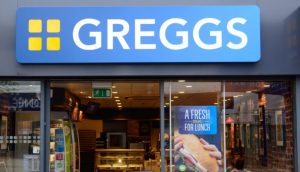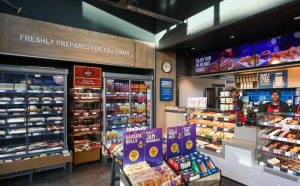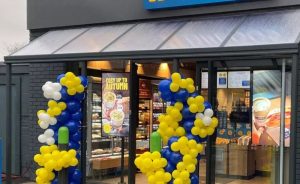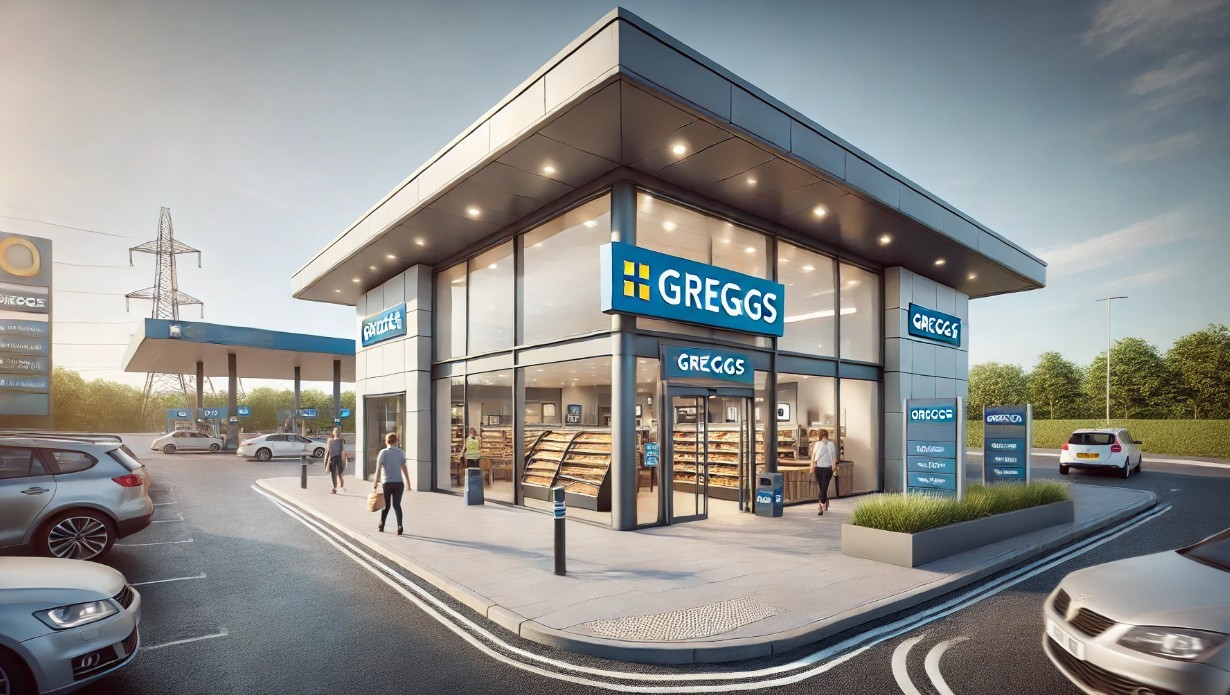Greggs Franchise Cost: How Much Is It in 2025?
What Makes Greggs a Great Business? For aspiring entrepreneurs in the UK food retail sector, Greggs stands out as one of the most recognisable and respected brands.
Known for its convenience, affordability, and quality, Greggs has become a fixture on British high streets and in transport hubs across the country.
But beyond its popularity lies a compelling business opportunity that many are eager to explore: the chance to operate a Greggs store through its partnership model.
As the demand for fast, affordable, and freshly prepared food continues to grow, so does interest in franchising with established brands.
This blog explores the true cost of opening a Greggs franchise cost this year, what’s included in the investment, the requirements for eligibility, and how it compares to other major food franchises in the UK.
What Makes Greggs a Great Business Opportunity in the UK?

Image – Source
Few brands in the UK command as much daily loyalty and affection as Greggs. From early morning commuters grabbing a bacon roll to families enjoying sausage rolls and sweet treats on the weekend, Greggs has become a cornerstone of British food culture.
Its extensive presence on high streets, service stations, and even transport hubs is a testament to its mass appeal and strong brand identity.
However, beyond its popular food offerings lies a compelling business model that offers entrepreneurs and corporate partners an opportunity to be part of a well-oiled operation with a proven track record.
The Greggs journey began in 1939 when John Gregg established a bakery in Tyneside. His mission was simple but powerful: to deliver fresh bread and baked goods directly to local communities.
The first official Greggs shop opened in 1951 in Gosforth, Newcastle upon Tyne.
The passing of John Gregg in 1964 marked a pivotal shift for the business. His sons, Ian and Colin Gregg, took the reins and transformed the small bakery into a national phenomenon.
Through strategic acquisitions, innovation, and a clear vision, the company grew into one of the UK’s most prominent high-street brands.
By 2019, Greggs had expanded to over 2,050 stores, employed more than 23,000 staff, and achieved record financial performance, including a 13% rise in annual sales to £1.17 billion and a 27% increase in profits.
Expansion has remained a core strategy for the business. In 2019 alone, 138 new Greggs shops opened, 45 of which were franchise locations.
The momentum continued into 2020, with plans to launch an additional 100 stores, 40 of them operated through franchise partnerships.
This expansion has been especially successful in locations such as petrol stations, motorway service areas, and convenience stores areas where traditional high-street setups might not be viable.
Today, Greggs has over 300 franchise stores operating across the UK, supported by a hybrid model that balances company-owned locations with selective franchise partnerships.
This strategy has allowed the brand to extend its reach without diluting quality or customer experience.
Is Greggs a Franchise? What’s Their Business Model in 2025?
Greggs does not operate a conventional franchise model in the way many fast-food giants do. Instead, it employs a unique business partnership structure designed for scalability and control.
The majority of Greggs stores remain company-owned. However, for strategic expansion into niche locations such as forecourts, motorway services, and travel hubs, Greggs forms partnerships with established businesses that have relevant operational experience.
Under this partner model, the selected business entity manages the day-to-day running of the store while Greggs provides comprehensive support in branding, supply chain logistics, training, store design, and national marketing.
This allows franchise partners to leverage a nationally trusted name while benefiting from corporate resources and operational guidance.
Rather than selling open franchise licenses to individuals, Greggs partners with businesses that can demonstrate operational capability, experience in food retail or hospitality, and the financial strength to manage multiple sites.
This ensures consistency across locations and aligns with Greggs’ commitment to brand integrity and customer satisfaction.
How Much Does a Greggs Franchise Cost in 2025?

Image – Source
The cost of opening a Greggs franchise in 2025 depends on several factors, including the store’s location, size, layout, and any necessary customisations to fit a particular retail environment.
The investment required is significant but reflects the support and resources provided by Greggs as part of the partnership.
Estimated Cost Breakdown:
| Cost Component | Description | Estimated Range |
| Initial Franchise Fee | Secures rights to operate under the Greggs brand | £25,000 – £30,000 |
| Store Equipment | Includes ovens, counters, kitchen appliances, and POS systems | £100,000 – £150,000 |
| Stock and Ingredients | Initial inventory and product stock | £20,000 – £30,000 |
| Shop Fitting and Signage | Store layout design, fixtures, fittings, and branding | £120,000 – £180,000 |
| Total Investment | Comprehensive startup cost | £260,000 – £390,000 |
It’s also important to note that these figures are estimates and may vary based on location and site-specific requirements. Urban or high-footfall locations may involve higher costs due to rent and design complexity.
What Do You Get for Your Investment?
One of the key reasons entrepreneurs and businesses are drawn to Greggs is the extensive support and infrastructure that come with the investment.
This isn’t just a licence to use the brand it’s a comprehensive package designed to help ensure long-term success.
Once the franchise agreement is signed, partners benefit from end-to-end assistance that begins with shop setup. Greggs supports store design, sourcing of equipment, installation, and fitting ensuring every location reflects the brand’s image.
Extensive training is also included for both the franchise owner and staff. This covers operations, food safety, customer service, and business systems.
The support doesn’t end once the store is open. Ongoing visits and consultation from business development managers provide guidance and ensure operational excellence.
In addition, franchisees get access to Greggs’ national supply chain, ensuring consistent quality and timely deliveries of all products.
They also benefit from the brand’s national marketing campaigns, digital promotions (including the Greggs app), and seasonal product rollouts.
How Does a Greggs Franchise Work in Practice?

Image – Source
Unlike building an independent food business from scratch, a Greggs franchise allows partners to start with a complete operational framework.
Franchisees operate independently, hiring staff, managing shifts, and handling local business needs, but the store runs according to Greggs’ operational model.
This includes:
- A formal franchise agreement granting the right to trade under the Greggs name.
- Support with setting up the store’s physical environment, from layout to signage.
- Centralised access to fresh ingredients and stock through Greggs’ logistics network.
- Participation in national marketing efforts and use of Greggs-branded materials.
- Structured operational guidance to maintain quality, efficiency, and compliance.
In return, franchisees are expected to maintain high standards in service, hygiene, and brand consistency.
What Services Do Greggs Stores Provide?
Greggs is best known for offering convenient, freshly prepared food and drink at affordable prices. Stores typically operate from early morning until early evening and cater to breakfast, lunch, and snack-time traffic.
The core menu includes:
- Traditional bakery items such as sausage rolls, steak bakes, and vegan alternatives.
- A breakfast range featuring bacon rolls, breakfast baguettes, and hot drinks.
- Cold food options like sandwiches, wraps, and salads.
- Sweet items such as doughnuts, cookies, cakes, and pastries.
- Beverages, including coffee, tea, hot chocolate, and seasonal drinks.
Greggs’ commitment to variety and value keeps customers coming back throughout the day, which supports a healthy sales volume for franchise operators.
What Are the Ongoing Costs of Running a Greggs Franchise?

While the initial investment is a significant consideration, ongoing costs also play a crucial role in profitability. These include:
- Royalty Fees: Typically, a percentage of monthly revenue paid to Greggs.
- Marketing Contributions: Regular contributions towards national and regional campaigns.
- Stock and Supply Costs: Ongoing purchase of ingredients and consumables through Greggs’ centralised supply chain.
- Operational Costs: Rent, utilities, equipment maintenance, and insurance.
- Staff Wages: Salaries for full-time and part-time employees.
Managing these costs efficiently is essential for maximising the store’s profitability.
How Profitable Is a Greggs Franchise in 2025?
Profitability depends on numerous factors, but Greggs’ strong brand recognition, operational support, and product demand contribute to strong performance.
The average net profit for a well-run Greggs partner store ranges from £60,000 to £100,000 per year. Return on investment is typically seen within five to seven years.
Franchisees who manage multiple stores or operate in high-footfall areas can see higher returns. Ultimately, profitability is tied to location, operational efficiency, and the ability to deliver consistently excellent service.
How Can You Apply for a Greggs Franchise or Partner Store in 2025?

If you meet the financial and operational criteria, applying for a Greggs franchise involves a structured process:
- Submit an expression of interest via the official Greggs website, outlining your background and business proposal.
- Attend initial discussions with Greggs’ development team to explore potential opportunities.
- Prepare a detailed business plan that includes your investment strategy and management approach.
- Undergo financial and operational vetting to ensure you meet the partnership standards.
- Propose and agree on a store location, subject to Greggs’ approval and feasibility analysis.
- Sign the franchise agreement and begin training, onboarding, and store setup.
From application to store opening, the process typically takes between six and twelve months.
How Does a Greggs Franchise Compare to McDonald’s, Subway, and Starbucks?
For entrepreneurs considering multiple franchise opportunities, it’s important to compare key business metrics.
Investment Comparison
| Franchise | Initial Cost | Liquid Capital Required | Ongoing Fees |
| Greggs | £260,000 – £390,000 | Varies | Royalties, supply chain fees |
| McDonald’s | £800,000+ | £150,000 | Royalties, advertising |
| Subway | £80,000 – £225,000 | Varies | 8% royalty, 4.5% marketing |
| Starbucks | £500,000+ | £500,000 | Royalties, marketing and branding |
Greggs offers a more affordable entry point than McDonald’s or Starbucks, with broader support than Subway.
Profitability & Return
| Franchise | Estimated ROI | Payback Period |
| Greggs | 10–20% annually | 5–7 years |
| McDonald’s | 15–20% annually | 3–5 years |
| Subway | 10–15% annually | 5–7 years |
| Starbucks | 10–15% annually | 6–8 years |
Greggs delivers a solid return with a reasonable payback period, ideal for UK-focused investors.
Is Investing in a Greggs Franchise Worth It in 2025?

For UK-based businesses or experienced entrepreneurs, Greggs presents a high-potential opportunity with manageable risk.
The brand’s national recognition, consistent customer demand, and operational support structure make it a compelling choice in the food retail sector.
Although the initial investment is substantial, the long-term gains, especially for those with multiple stores, can be highly rewarding.
With Greggs continuing to grow and diversify its offerings, now is an opportune time to consider becoming part of its expanding network.
Conclusion
Greggs has carved out a unique position in the UK’s food-on-the-go sector, a position built on consistent quality, nationwide brand recognition, and a deep understanding of British consumer habits.
Its franchise partnership model offers a practical and profitable opportunity for experienced operators looking to align with a trusted brand.
While the initial investment ranges between £260,000 and £390,000, the support provided from store setup and training to marketing and supply logistics makes it a comprehensive business package.
Profitability varies based on location and efficiency, but many partners report strong returns and long-term sustainability.
In a competitive market where consumer loyalty is key, investing in a Greggs franchise in 2025 represents more than just a business move it’s a chance to join a brand that is deeply woven into the everyday lives of millions across the UK.
FAQs About Greggs Franchise Cost in 2025
What is the difference between Greggs’ franchise and partnership model?
Greggs uses a partnership model, primarily with established retailers and operators, rather than offering open franchises to the public.
Who qualifies to apply for a Greggs franchise?
Typically, experienced business operators with financial capacity and a background in hospitality or retail are eligible.
Does Greggs offer financial assistance to franchisees?
No, Greggs does not provide direct financing. Franchisees usually fund their investment through private capital or commercial lending.
How long does it take to open a Greggs franchise?
The full process, from application to launch, generally takes between six and twelve months.
What is the ongoing royalty fee structure?
While Greggs does not publicly disclose the exact royalty percentages, franchisees are expected to contribute to royalties, marketing, and supply chain costs.
Is Greggs expanding into new types of locations in 2025?
Yes, Greggs is actively growing its presence in forecourts, convenience stores, and travel hubs.
Can franchisees operate more than one Greggs store?
Yes, multi-site operations are encouraged for successful partners with proven operational capabilities.







